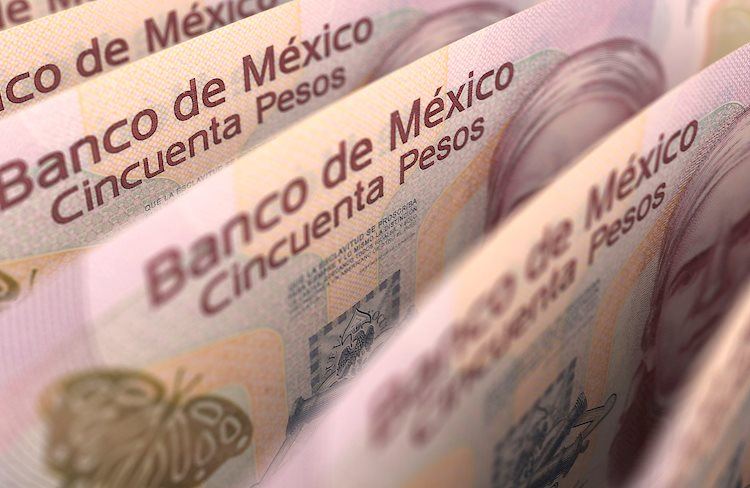The Mexican Peso has experienced a sharp drop, currently trading at 18.09 against the US Dollar. Market focus is on upcoming inflation and GDP data releases, which could significantly impact the path of the Mexican currency. Retail sales in Mexico have missed expectations, contributing to a gloomy economic outlook. Economists expect a 25-basis point rate cut by the Bank of Mexico (Banxico) in August, with the USD/MXN forecast for the year end revised to 18.80.
The Citi Research Expectations survey shows that analysts anticipate inflation to end the year at 4.30% YoY and underlying inflation at 4.0%. Mexico’s economy is expected to grow by 1.9% in 2025. Fitch Ratings reaffirmed Mexico’s BBB- rating with a stable outlook but expressed concerns over the proposed judicial reform and trade tensions with the US. The US Dollar Index is trading higher at 104.42. Manufacturing weakness has been signaled by the Richmond Fed Manufacturing Index, with the chances of a rate cut by the Federal Reserve in September at 96%.
Technical analysis indicates that the USD/MXN has risen above 18.00, with resistance levels at 18.50 and 18.99. Support levels are at 17.74 and 17.58, with a breach potentially leading to a challenge of the January 23 peak at 17.38. The Mexican Peso is influenced by the performance of the economy, central bank policies, foreign investment levels, and geopolitical trends. Oil prices and nearshoring decisions also impact the MXN.
The main objective of Mexico’s central bank, Banxico, is to maintain low and stable inflation levels through appropriate interest rate adjustments. Higher interest rates are positive for the Mexican Peso, attracting more investors due to higher yields. Macroeconomic data releases play a crucial role in assessing the state of the economy and influencing the MXN valuation. A strong economy with high growth and low unemployment is beneficial for the Peso, while weak economic data can lead to depreciation.
As an emerging-market currency, the Mexican Peso tends to perform well during risk-on periods when market risks are perceived to be low. On the contrary, the MXN weakens during market turbulence or economic uncertainty as investors seek safe havens. Geo-political trends, oil prices, and foreign investment levels also impact the Mexican Peso’s value. In conclusion, factors such as economic data releases, interest rate decisions, and global market conditions play a significant role in shaping the future outlook of the Mexican Peso.































